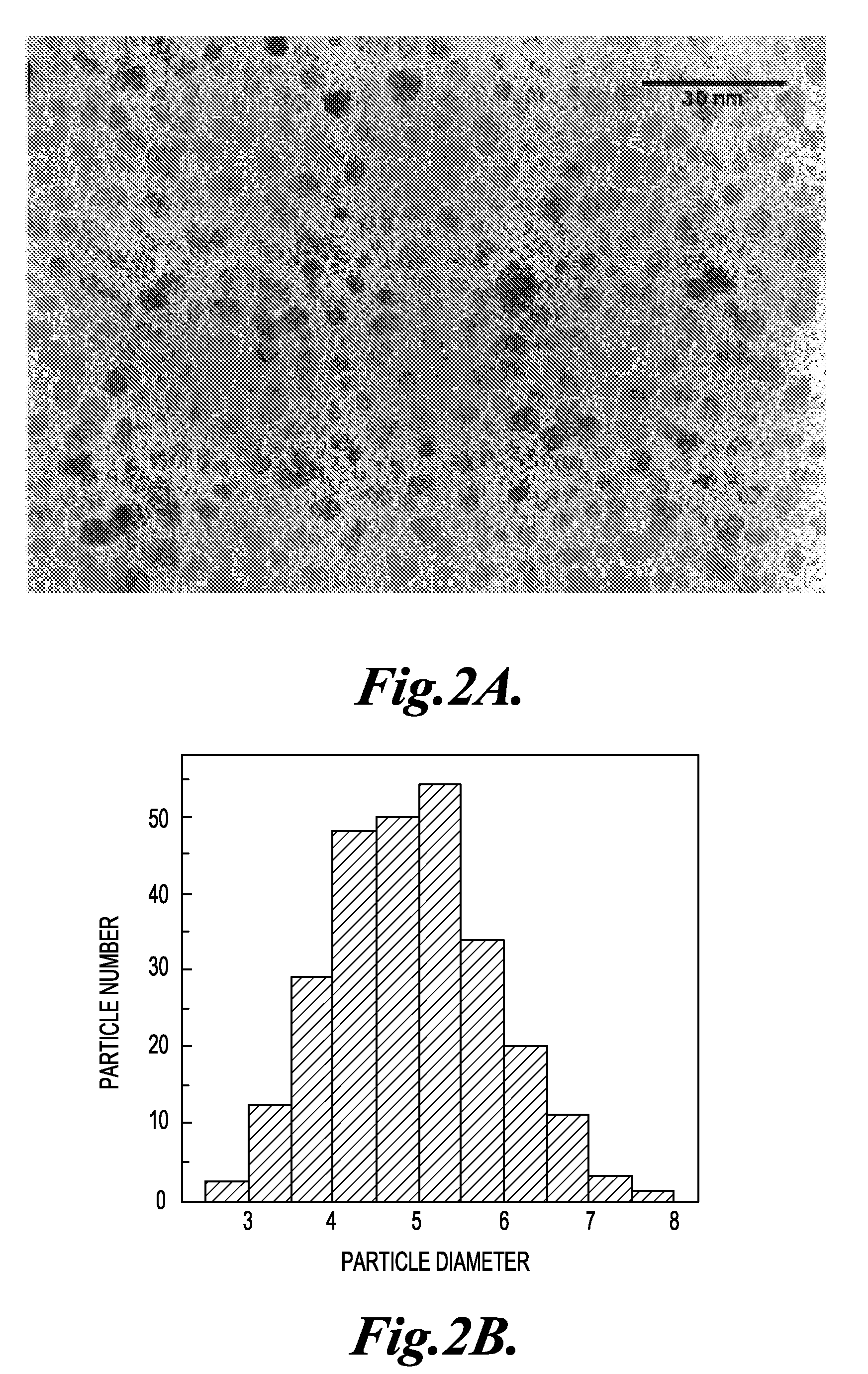Stimuli-responsive magnetic nanoparticles and related methods
a technology of magnetic nanoparticles and magnetic nanoparticles, applied in the direction of magnetic bodies, magnet paints, instruments, etc., can solve the problems of small size, reduced magnetic capture efficiency, loss of favorable diffusive properties, etc., and achieves the effect of reducing the size of the magnetic capture device, and reducing the efficiency of magnetic captur
- Summary
- Abstract
- Description
- Claims
- Application Information
AI Technical Summary
Benefits of technology
Problems solved by technology
Method used
Image
Examples
example 1
The Preparation and Characterization of Representative Temperature-Responsive Nanoparticles
[0156]In this example, the preparation and characterization of representative temperature-responsive nanoparticles of the invention is described.
[0157]Materials. N-Isopropylacrylamide (NIPAAm) (Aldrich, 97%) was recrystallized from benzene / hexane 3:2 (v:v) and dried under vacuum prior to use. 2-dodecylsulfanylthiocarbonylsulfanyl-2-methyl propionic acid (DMP) is a gift from Noveon. Iron pentacarbonyl / Fe(CO)5 (Aldrich, 99.999%), 4,4′-Azobis(4-cyanovaleric acid) (Aldrich, 75+%), tetraethylene glycol dimethyl ether / tetraglyme (Aldrich, 99%), N-hydroxysuccinimide / NHS (Aldrich, 98%), methanol (EMD, 99.8%), hexane (EMD, 89.2%), tetrahydrofuran / THF (EMD, 99.99+%), p-dioxane (EMD, 99%), biotin (Aldrich), HABA / avidin reagent (Aldrich), EZ-Link® Biotin-LC-PEO-Amine and N,N′-dicyclohexylcarbodiimide / DCC (Pierce) was used without any purification.
[0158]Synthesis of PNIPAAm. Polymerization of PNIPAAm was p...
example 2
The Preparation of a Stimuli-Responsive Microfluidic Separation System
[0167]SU-8 Master and PDMS Device Fabrication. A silicon wafer was spin-coated with SU8-50 and baked at 95° C. for 1 h. The photoresist was exposed to UV light (Kaspar-Quintel model 2001 aligner) for 150 s through transparency masks. After exposure, the masters were baked at 95° C. for 10 min and developed with SU-8 developer (Microchem) for 15 min. The masters used in this study were 0.1 mm tall and 0.5 mm wide. Patterned masters and bare silicon wafers were passivated by 10 minute exposure to silane under vacuum. PDMS prepolymer was prepared by mixing PDMS base with a curing agent in a 10:1 ratio by weight and degassing the mixture under vacuum. To fabricate fluid channels, the mixture was cast against the pattered silicon master. To fabricate the lower surface, the mixture was cast over a bare silicon wafer. In both cases the samples were cured at 60° C. for 3 h. A piece of silicone tubing was embedded into the...
PUM
| Property | Measurement | Unit |
|---|---|---|
| Diameter | aaaaa | aaaaa |
| Diameter | aaaaa | aaaaa |
| Diameter | aaaaa | aaaaa |
Abstract
Description
Claims
Application Information
 Login to View More
Login to View More - R&D
- Intellectual Property
- Life Sciences
- Materials
- Tech Scout
- Unparalleled Data Quality
- Higher Quality Content
- 60% Fewer Hallucinations
Browse by: Latest US Patents, China's latest patents, Technical Efficacy Thesaurus, Application Domain, Technology Topic, Popular Technical Reports.
© 2025 PatSnap. All rights reserved.Legal|Privacy policy|Modern Slavery Act Transparency Statement|Sitemap|About US| Contact US: help@patsnap.com



